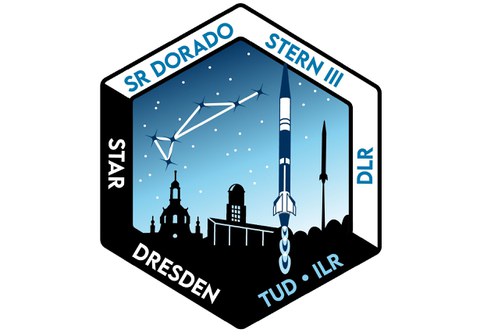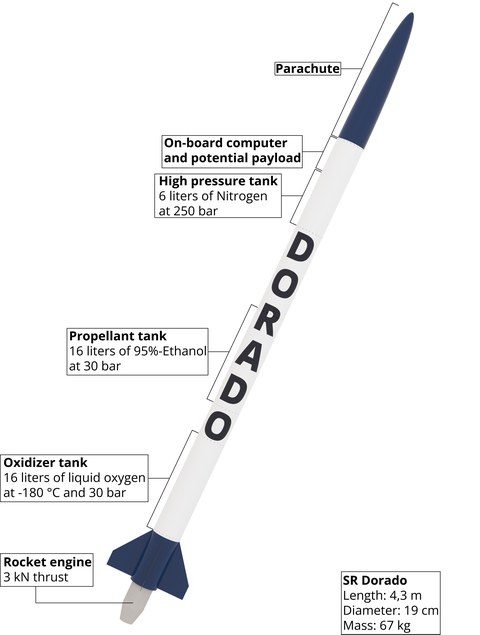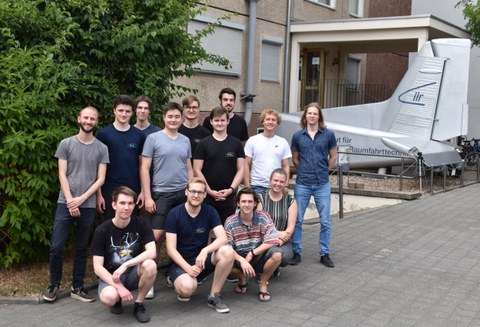Oct 19, 2022
SR Dorado: a new development project of the Institute of Aerospace Engineerung (ILR) in cooperation with the Student Spaceflight Working Group (STAR) Dresden
The Project
Within the framework of the STERN III funding (STudentische ExperimentalRaketeN) of the German Aerospace Center (DLR), TU Dresden receives the opportunity to establish a new development project with the name "SR Dorado". As a follow-up project to the SMART Rockets campaign, the Institute of Aerospace Engineerung (ILR) in cooperation with the Student Spaceflight Working Group (STAR) Dresden will develop a new, larger and more powerful sounding rocket starting on first of July 2022.
The rocket has a dimension of about 4.5 meters in length with a diameter of 20 centimeters and should reach a flight altitude of about 7.5 kilometers. For this purpose, a propulsion system with a thrust of 3 kilonewtons, unique in Germany, will be used, which will be operated with the liquid fuels oxygen and ethanol. The rocket is planned to be launched in spring 2025 from the northern Swedish launch site ESRANGE in Kiruna.
The focus of this development project is placed on the practical training of students in the field of space launch systems. The aim is to promote both subject-specific training as a supplement to study content, as well as working in project structures and deepening social skills.
The Rocket
The rocket consists of several subsystems that perform defined functions.
The propulsion system includes the storage, delivery and utilization of liquid propellants. It consists of a pressurized gas system that uses gaseous nitrogen to supply tanks and valves with the necessary working pressure. For the storage of the pressurized gas and propellants, 3 tanks will be implemented, which will be connected to each other and to the engine via piping systems. The components of the propulsion system will be tested and qualified in several test campaigns using a specially developed test bench.
The carbon fiber reinforced plastic (CFRP) structure is responsible for supporting structural and mechanical loads and provides attachment facilities for further rocket components. The aerodynamically optimized outer shell protects the individual system components from environmental influences during the launch, flight and landing phases.
The rocket nose cone houses the recovery system as well as the measurement and telemetry system. While the parachutes ensure safe landing and recovery of the rocket, the measurement system records flight data such as altitude, attitude and acceleration via various sensors to analyze the rocket's flight behaviour. The telemetry system ensures the communication with the ground station and manages the transmission of mission-relevant information. In addition, the upper rocket section offers the possibility to accommodate an additional scientific payload.
In addition to the test bench, the ground segment also includes the infrastructure required for a launch in Kiruna. In particular, this includes transport, launch and communication units, which will be equipped with the necessary interfaces.
The Team
The SR-Dorado team comprises about 25 members and consists mostly of students from the TU Dresden in the fields of mechanical engineering, aerospace engineering, electrical engineering and mechatronics. The students are supported by employees of the Institute of Aerospace Engineering of the TU Dresden. Based on practical work, the project offers students the opportunity to complete student theses, participate in a student assistant position, or get involved on a voluntary basis. Interested students of all disciplines are invited to reach out to STAR Dresden e.V. or directly contact the SR-Dorado team.



